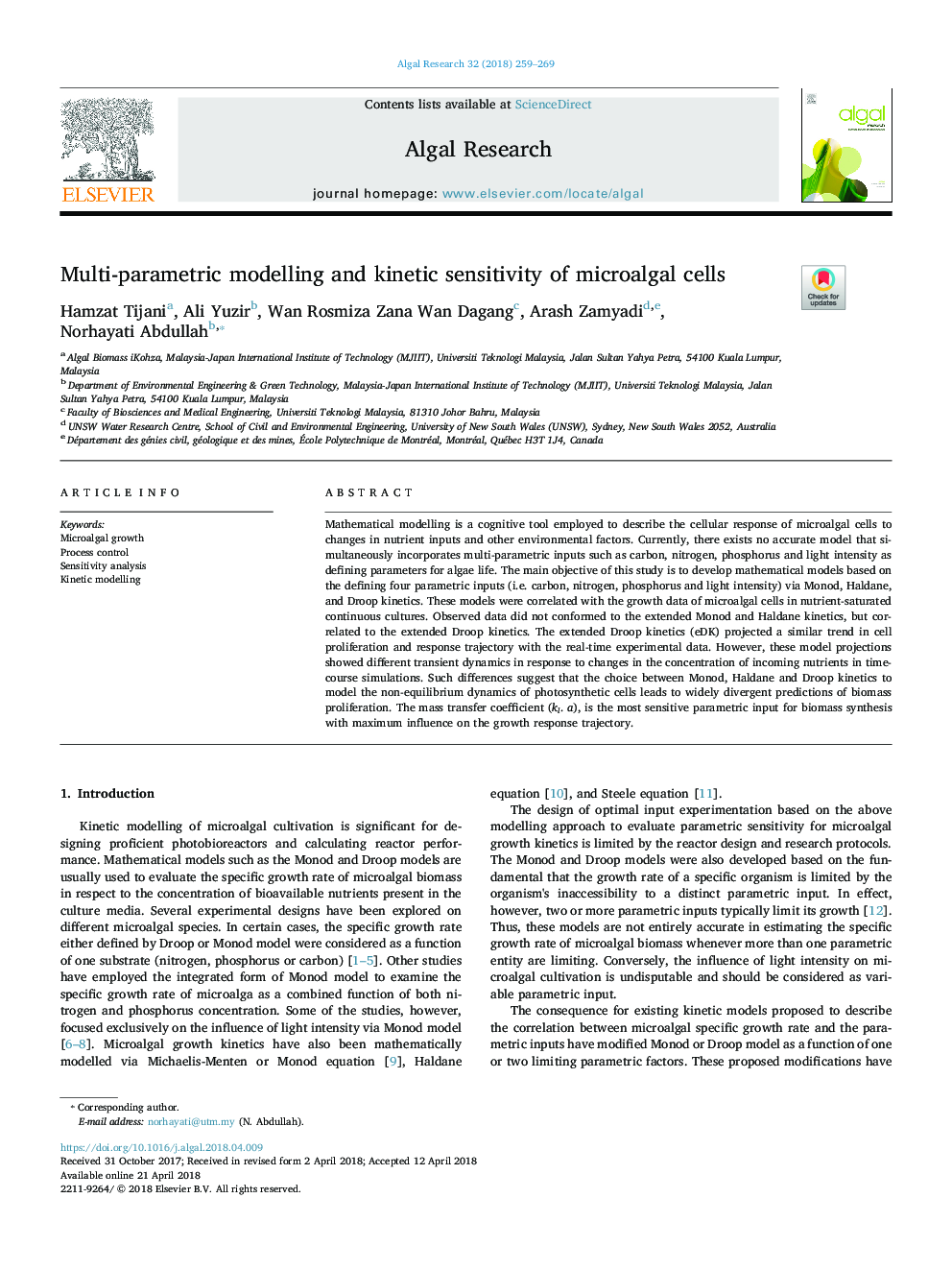| Article ID | Journal | Published Year | Pages | File Type |
|---|---|---|---|---|
| 8085800 | Algal Research | 2018 | 11 Pages |
Abstract
Mathematical modelling is a cognitive tool employed to describe the cellular response of microalgal cells to changes in nutrient inputs and other environmental factors. Currently, there exists no accurate model that simultaneously incorporates multi-parametric inputs such as carbon, nitrogen, phosphorus and light intensity as defining parameters for algae life. The main objective of this study is to develop mathematical models based on the defining four parametric inputs (i.e. carbon, nitrogen, phosphorus and light intensity) via Monod, Haldane, and Droop kinetics. These models were correlated with the growth data of microalgal cells in nutrient-saturated continuous cultures. Observed data did not conformed to the extended Monod and Haldane kinetics, but correlated to the extended Droop kinetics. The extended Droop kinetics (eDK) projected a similar trend in cell proliferation and response trajectory with the real-time experimental data. However, these model projections showed different transient dynamics in response to changes in the concentration of incoming nutrients in time-course simulations. Such differences suggest that the choice between Monod, Haldane and Droop kinetics to model the non-equilibrium dynamics of photosynthetic cells leads to widely divergent predictions of biomass proliferation. The mass transfer coefficient (kl. a), is the most sensitive parametric input for biomass synthesis with maximum influence on the growth response trajectory.
Related Topics
Physical Sciences and Engineering
Energy
Renewable Energy, Sustainability and the Environment
Authors
Hamzat Tijani, Ali Yuzir, Wan Rosmiza Zana Wan Dagang, Arash Zamyadi, Norhayati Abdullah,
